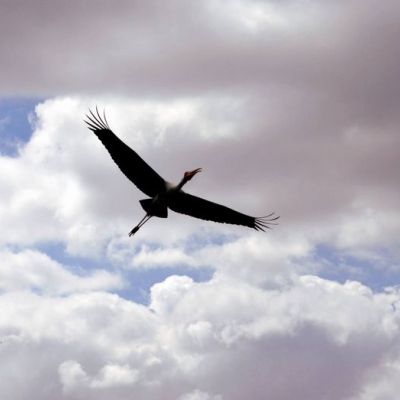A Journey to the Himalayan Heaven
Embarking on a soul-rejuvenating journey through the Himalayas, from the peaceful realms of Kamand Village to the mystical allure of Prashar Lake and the snow-clad Dhauladhar range, and exploring the enchanting streets of McLeod Ganj, I discovered the true essence of nature's serenity and found solace in the embrace of the mountains.
Whenever the Himalayas offer me a chance to recharge my mind with the vibes of its unperturbed nature at the cost of taking voluntary leave, I do not think twice to embrace the offer. This time, the call came from Kamand Village in Himachal Pradesh, situated on the bank of the Uhl River in the Mandi district. The itinerary also included visits to Prashar Lake and McLeod Ganj. It was my husband's professional tour in the month of December, and though it wasn't easy to arrange leave at that moment, I managed to secure some time to spend in the lap of the giant yet peaceful mountains.
The tour spanned 3 nights and 4 days. Since it was a spontaneous trip for me, I booked an air ticket from Bangalore to Delhi just a day before departure. My husband and I couldn't travel on the same flight, so we arrived at different terminals of the Delhi airport with a half-hour gap in the morning. One of my husband's friends picked us up from the airport and took us to his home in Dwarka. We enjoyed a life-saving cup of coffee at his home on that winter morning in Delhi. Adapting to the sudden temperature change from Bangalore to Delhi was a bit challenging, but after spending a few hours catching up with my husband's friend, we went shopping for essential food items for our trip. We bought laddu made of sesame seeds and dry fruits, which provide warmth to the body. Later, we had a delicious lunch at a Kabab place.
We booked a car for 4 days from Delhi and began our journey to Kamand in the evening. We had our dinner at Mannat Dhaba, which had clean and nicely decorated interiors. The taste and quality of the food were also excellent. During our journey, we made a stop in Saharanpur for an hour at midnight as the driver needed to rest in the car. It was a cold winter night in north India, and when we stepped out of the car at a dhaba, there was nobody around, no lights on the road, and no other cars in sight. We were shivering heavily from the cold. Despite drinking two cups of hot tea at the dhaba, the shivering did not stop. It was an unbearable experience, but the adventure I had during that journey was truly a once-in-a-lifetime experience.
We reached Mandi city in the early morning and proceeded towards Kamand after crossing the Beas River. The breathtaking view of the snow-capped Himalayan mountain range left us stunned. While we were enjoying the scenery, the driver, on the other hand, was on the brink of tears due to the challenging road conditions. He kept saying to his friend over the phone, "Yeh kaha leke aye humko".
We arrived at Kamand around 8 o'clock. Kamand is located approximately 51 kilometers from Kullu and is in close proximity to the IIT Mandi South Campus. We had a guest house booked for our stay, and initially, it was difficult to stay away from the room heater. It took some time to acclimatize to the weather. Since my husband had a tight work schedule until the afternoon, he got busy as soon as we reached Kamand. The guest house didn't provide any food, so I had to venture out to find a breakfast place.
I started walking along the bank of the Uhl River, which flows through a narrow deep valley with steep ridge banks. It felt like I was immersed in the solitude of nature. Along the way, I came across a security check post of Kamand. The village had very few households, particularly near the south campus of IIT Mandi. After passing the check post, I noticed a few shops, including grocery stores, chicken shops, and small village restaurants run by local villagers. In one of the restaurants, a local lady was preparing bread toast by frying it in generous amounts of butter. I also bought a banana from another shop and enjoyed the bread butter toast with the fruit. The taste was truly delightful. Interacting with the innocent villagers amidst the beauty of the Himalayas was the most blissful moment of my trip.
Our plan for the day was to visit Prashar Lake. Since there were no restaurants near the guest house, I had a lunch consisting of dry fruits and a banana. We began our journey to Prashar Lake around 2:30 PM. The road conditions were not favorable, and for the last half an hour of our journey towards Prashar Lake, there was no sign of any local settlements. The road was enveloped in a thick layer of snow, and towering trees of the dense forest lined both sides of the path. The driver became fearful once again, worried that any car trouble would leave us stranded in an unfamiliar place. I found his phobia quite strange and amusing, as I hadn't encountered anyone else with such an unusual fear. Finally, we arrived at the Prashar Lake parking area around 3:45 PM.
Prashar Lake, named after Sage Prashar who meditated on its banks, is situated at an altitude of 2,730m above sea level. With its crystal-clear water, the lake houses a floating island that moves in all directions. The island drifts towards the east in the morning and shifts towards the west in the evening. Local beliefs state that when the world comes to an end, the island will stop moving. The lake is considered a representation of the Earth, with the floating island symbolizing its axis of revolution. Despite numerous attempts by experts, the depth of the lake remains unknown, leading local residents to call it a bottomless lake. At the site, there is a three-story pagoda-style temple dedicated to Sage Prashar, built by Raja Ban Sen, the ruler of Siokot.
The driver dropped us off at the parking area near the government guest house, which was about half a kilometre away from the lake. We were enthralled by the breathtaking view of the snow-clad Dhauladhar range. We embarked on a walk along a narrow pathway that led us to Prashar Lake. The experience was mesmerizing as we walked amidst mountains covered in a pristine blanket of snow.
After exploring the lake and the temple, we made our way towards the peak of Prashar Lake. I didn't find the hike easy at such a high altitude. However, once we reached the peak, the serene view of the snow-covered mountains, the panoramic view of the valley, the lake, and the temple was absolutely hypnotic. It's no wonder the Himalayas are called the abode of gods. The tranquil hidden Himalayan ranges offer an ideal environment for rejuvenating the soul, as they provide an opportunity to transcend discontentment through the power of introspection. I yearned to spend some time alone, basking in the cool breeze that gently caressed my face. Destroying nature for the sake of our luxury, comfort, and acquisitiveness is a crime.
We descended to the lake and discovered two small eateries located just behind the temple. We indulged in a delightful evening snack consisting of hot maggie and tea before making our way back to the Kamand guest house.
The itinerary for the next two days included a journey to McLeod Ganj on the following day and a return to Delhi via Chandigarh on the subsequent day.
We were all set for an early morning journey to McLeod Ganj, which was a four and a half hour drive from Kamand. Along the way, we stopped to have breakfast. It's worth mentioning that in most restaurants in Himachal Pradesh, the popular breakfast option consists of various types of parathas (such as aloo and gobi) served with pickles.
During our journey, we also made a stop at the Baijnath temple, dedicated to Lord Shiva. Located 50 kilometers from Dharamshala and 16 kilometers from Palampur, this ancient temple showcases medieval North Indian Nagara style architecture. As we explored the temple, we couldn't help but admire the breathtaking view of the Dhauladhar Himalayan range visible from its rear side.
We reached McLeod Ganj, the home of the Dalai Lama, at around 2 o'clock in the afternoon. McLeod Ganj is located on an uphill slope from Dharamshala. The hotel we booked was near the sunset point and Dal Lake of McLeod Ganj. We were amazed to see the Dhauladhar range, wrapped with snow, just behind our cottage. After keeping our luggage in the room, we rushed to the Dalai Lama temple complex as we only had half a day to explore McLeod Ganj.
To reach the Dalai Lama temple complex, Tsuglagkhang, we had to walk through the Tibetan market. The market is a nice shopping street filled with Tibetan clothing, crockery, and ornament stores, and most importantly, many Tibetan restaurants. Since we were hungry, we couldn't resist eating one of my favourite cuisines at a Tibetan restaurant before visiting the Dalai Lama temple complex. I found the Tibetan market to be the best place to buy souvenirs from McLeod Ganj.
The temple complex serves as the home of the 14th Dalai Lama and his followers. The political organization, Tibetan Government-in-Exile, is run from the Dalai Lama temple complex. The Tibetan Government-in-Exile oversees many schools and cultural activities for the Tibetans residing in India. The monastery, the main place of worship, is the largest Tibetan temple outside of Tibet. Monks are also trained in rituals at this monastery. The temple complex also houses a Tibetan museum and a library.
The next spot we visited in McLeod Ganj was St. John in the Wilderness. This Protestant church, with its neo-Gothic architecture, was built in 1852. Located in a deodar forest, the church creates a quiet and peaceful atmosphere. The Belgian stained glass, donated by Lady Elgin, and the old brass oil lamps enhance the stunning design of the church. There are hundreds of graves surrounding the church. Lord Elgin, the Viceroy and Governor-General of India during the colonial period, is buried in this church. A memorial has been built over Lord Elgin's grave.
In the evening, we returned to the hotel right after sunset. We sipped tea while enjoying the snow-covered Dhauladhar range in the garden in front of our cottage. We regretted not including another day in our travel plan, as we were captivated by the enchanting Himalayas. We made plans to depart for Delhi airport via Chandigarh at 5 o'clock the following winter morning.
When we started, it was still dark and there was no one on the road. We had tea at a Punjabi dhaba, which was not very clean, but we warmed ourselves up by the fireplace in the misty morning. We entered the Punjab province and passed the Nangal hydel channel. Before reaching Chandigarh, we had breakfast at a small dhaba surrounded by mustard fields. The graciousness of the dhaba owner and the mouth-watering gobi paratha with tea while sitting in front of the mustard fields was an unforgettable experience for me. We had lunch again at Mannat dhaba and reached Delhi airport at around 4:30 PM.
Immersing myself in the pristine and untouched Himalayas, observing the life and society surrounding me during these four days, was a unique and invaluable experience in my life. The experience enticed me to stay back and break free from the constant tug of war of daily life. Promised myself to come back to the lap of the Himalayas in Himachal Pradesh again and again instead of turning away from my daily responsibilities.


